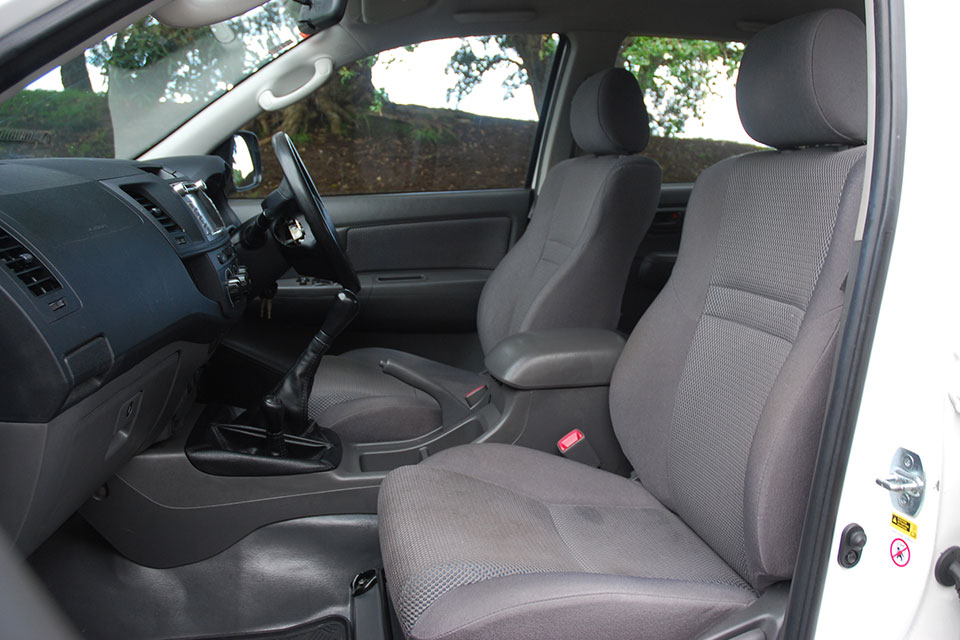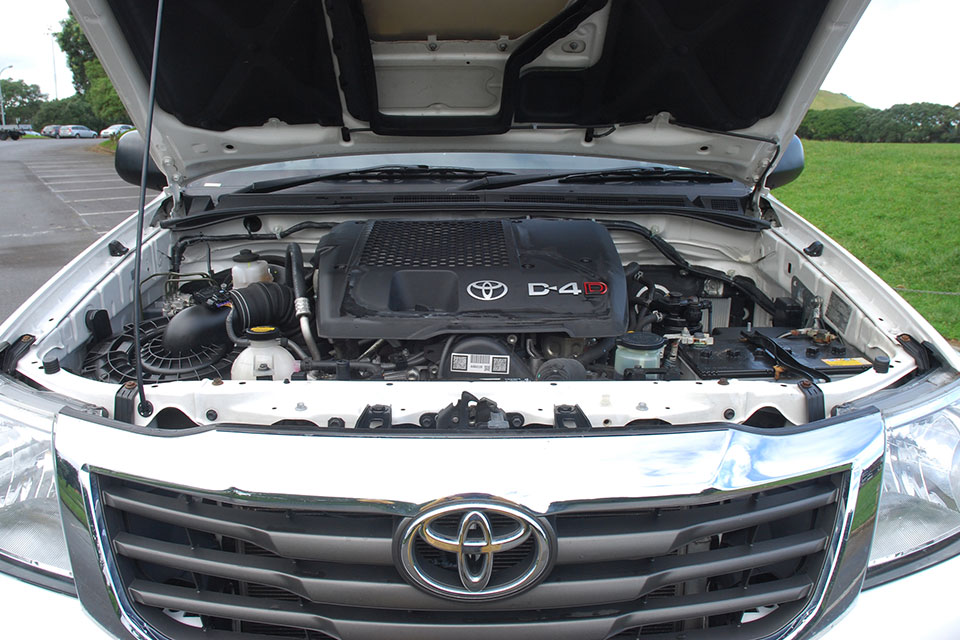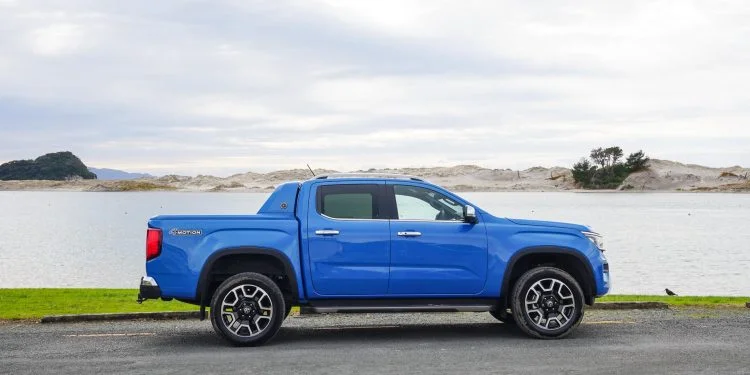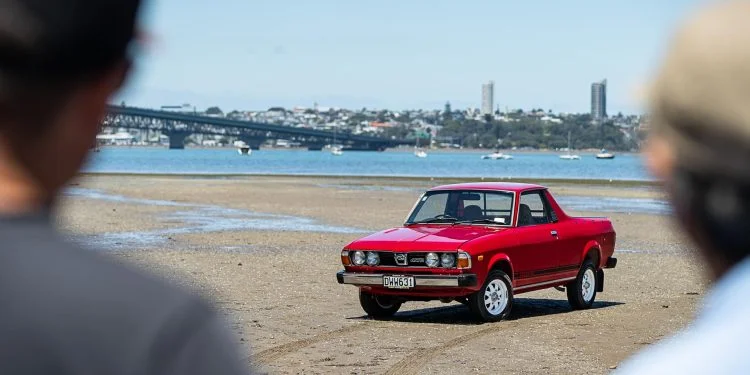Toyota Hilux 2004-2015 used car review
The Toyota Hilux is a tough-as-nails ute, built for hard work.

The Toyota Hilux is a tough-as-nails ute, built for hard work. It can be expensive compared to others but holds its value very well.
The Toyota Hilux was New Zealand’s most popular ute for 30 years - little wonder as it is practical, durable and efficient. The seventh generation Hilux was launched in 2004. It introduced a softer, more rounded look. It also had a larger, more comfortable interior.
It could be purchased with single, “Extra” (with additional storage space and a small seat behind the front row) and double cab bodies – the latter was the most popular.
Inside and out
The Toyota Hilux was New Zealand’s most popular ute for 30 years - little wonder as it is practical, durable and efficient. The seventh-generation Hilux was launched in 2004. It introduced a softer, more rounded look. It also had a larger, more comfortable interior. It could be purchased with single, “Extra” (with additional storage space and a small seat behind the front row) and double cab bodies – the latter was the most popular.
Inside, the Hilux is basic but comfortable. There is wipeable vinyl flooring instead of carpet. The seats are covered in a durable fabric. The plastics are hardwearing and thick – our review vehicle had been in commercial use and the plastic showed no signs of wear. The gauges are large and easy to read. An easy-to-use CD player stereo has a small LCD screen. Below this are simple controls for the manual air-conditioning.
The front seats are comfortable, although quite soft – some users might want a little more support. Back seat legroom is reasonable and three adults can fit across the seat, although two adults and a child will be more comfortable. The rear backrest is very upright, which could make it slightly uncomfortable for very long journeys.
There is little storage in the cabin and luggage will need to live in the rear tray. You can carry a lot back there as the tray is just over 1.5-metres long and wide. Items up to 1.1-metres will fit between the wheel arches. The Hilux will carry a total load of up to 975kg.
These dimensions are smaller than those on the market-leading Ford Ranger. Our review vehicle is fitted with an aftermarket tray liner and we recommend installing one for protection. They cost from $400.
On the road
Three engine options are available for the Hilux - a 2.7-litre four-cylinder petrol, a 4-litre six-cylinder petrol and the 3-litre four-cylinder turbocharged diesel in our review vehicle. A five-speed manual is the most common transmission, although an automatic with either four or five speeds was available.
Hiluxs can be two-wheel drive or four-wheel drive – the latter comes with a high and low range transfer box. The Hilux uses a shift lever, unlike some modern utes that activate the four-wheel drive system with a button or dial. The 3-litre engine produces 126kW and 343Nm, enough for the Hilux to keep up with traffic even with a load on board. The manual transmission is a little stiff when cold and takes some getting used to.
The engine is quite noisy – rattly when cold and producing a roar when accelerating with any haste. The Hilux has an independent front suspension for better steering and a heavy-duty rear axle with leaf springs at the rear for maximum towing and carrying ability.
When empty, it can feel a bit bouncy and even small bumps in the road are exaggerated. With a load on board, it settles down to a comfortable ride. There is some body roll but plenty of grip. The brakes are capable while the steering feels a little soft and vague.
Off-road, the Hilux is very capable. The low range transfer case and limited-slip rear differential allow it to crawl over tricky obstacles. At 227mm, its ground clearance is good, though that’s bettered by other utes. It’s an area where being slightly smaller than the competition works in the Hilux’s favour – it can slip up narrower tracks without brushing against trees.
Visibility is good from the driver’s seat, thanks to the sloping nose and huge side mirrors. Unfortunately, seeing directly behind the ute’s tall rear is tricky and we would recommend fitting either a reversing camera or parking sensors. Neither are standard on this Hilux. A camera to fit yourself costs from $50 or professionals will do it for you from $200.
This generation Hilux had a competitive tow rating when first launched. However, by the middle of its life on sale, newer competitors offered more capacity. Four-wheel drive models can pull trailers up to 750kg unbraked (a medium-size garden trailer) and 2,500kg braked (a medium-large trailer boat). Two-wheel drive models have a slightly lower braked rating of 2,250kg.
Safety
RightCar lists the Hilux (2005-2015) with a four-star ANCAP rating. All models carry the rating although Hiluxs sold after mid-2011 offer significantly more safety features, including electronic stability control, side airbags and curtain airbags depending on the model. Front airbags and anti-lock brakes are standard on all models.
There are no ISOFIX child seat mounts in the rear of the car because of Australian Design Rules. There are two child seat anchors in cars built before 2011 and three from that year. Before 2011 the centre seat belt is a lap-only type and does not offer as much protection as a shoulder-style belt.
Reliability
The Toyota Hilux is considered extremely tough and durable. The body itself and the interior plastics and trim are very well made and hardwearing.
The 3-litre “D4D” turbocharged diesel engine fitted to most Hiluxs uses a cambelt that will need to be regularly replaced. They are reliable engines although they need to be looked after.
Rough running usually indicates injector failure because of heat and deposit build-up, often as a result of hard use, poorer quality fuels, lack of maintenance or just plain premature wear. It’s an all-too common issue in these engines, often at around 60,000km.
Our trade experts suggest replacing the fuel filter every 60,000km, more frequently than recommended by Toyota.
Manual transmission models are known to suffer from early clutch wear, especially if they have been towing. Signs can range from a gradually stiffening clutch pedal (which indicates a leaking master cylinder) to slippage on inclines or when getting underway (which indicates a worn plate).
Cost of ownership
Toyota recommends servicing the Hilux every 12 months or 15,000km, whichever comes first. Service costs vary with the mileage covered. The first service will cost $315 and the second $600. A major service at 90,000km will cost from $1,200. The cambelt requires replacement every ten years or 150,000km at a cost of $1,150.
RightCar estimates that over 14,000km of driving a year, this Hilux will cost $2,530 in fuel and Road User Charges, the same as a Nissan Navara. The 76-litre fuel tank will cost $110.20 to fill at $1.45 a litre and could take you up to 865km before the fuel light comes on.
A vehicle licence for the Hilux costs $183.31 a year, with the car in the cheapest ACC levy group for diesel.
Trade Me Insurance estimates insurance for a Hilux valued at $28,010 will cost $62.74* per month. This is the same as a Ford Ranger although, unlike that vehicle, the Hilux is not considered high risk so does not come with special conditions.
Buyers' guide
The Toyota Hilux is legendary for holding its value - even early models fetch $10,000. Post-2011 models are the best value – they start on Trade Me from around $16,000 as they offer more standard safety features and an upgraded turbocharged diesel engine. Prices can reach as high as $45,000.
Watch out for Hiluxs that seem particularly cheap – check they are not a used import. A few are coming in from Australia as “statutory write-off” vehicles – cars damaged in Australia, unable to legally return to the road there and shipped to New Zealand for repair and sale.
Fixed correctly, they might be safe but they will carry a note of their history on their documentation for life. That will make them harder to sell and permanently reduce their value. A check of MotorWeb will show up if the car is registered as damaged.
Variants
- Single cab - Comes with fabric seats, steering wheel audio controls, manual air-conditioning, anti-lock brakes, CD player stereo, steel wheels, security system, electronic stability control (from 2011), cruise control, electric windows, and driver and passenger airbags.
- Extra cab - As per single cab with additional cabin space and foldaway second-row seats.
- Double cab - As per single cab with curtain airbags (from 2011), four doors and seating for five.
- SR5 - Adds alloy wheels, carpet flooring, fog lights and side airbags.
Special Edge and TRD packages were also offered, including alloy wheels, graphics and optional extras such as style bars and towing packages.
Timeline
- 2004 Launched internationally
- 2008 Received a cosmetic facelift
- 2011 Received a significant cosmetic facelift, slightly more engine power and the addition of electronic stability control
- 2015 Replaced by new model
Details
2014 Toyota Hilux D4D
$18,500 to $45,000 for models which have travelled 70,000 to 120,000km
3-litre four-cylinder turbocharged, 126kW/343Nm (claimed)
Five-speed manual, four-wheel drive with low-range transfer box
Five-star ANCAP
15,000km or 12 months
Full size wheel
8.2-litres per 100km (claimed)
Diesel
5260mm
1835mm
1810mm
750kg (unbraked), 2500kg (braked)
11.6m
This review covers the Toyota Hilux for model years 2004, 2005, 2006, 2007, 2008, 2009, 2010, 2011, 2012, 2013, 2014 and 2015.
Review vehicle supplied by AutoSelect.
*Our insurance estimates are based on a 35-year-old male with no accidents in the last two years, garaging the car in Mission Bay, Auckland. The car is not used for business and will cover 10,000km to 20,000km a year. We estimate with no option add-ons and $500 excess. Customise your estimate at Trade Me Insurance.
Image gallery
Also consider






